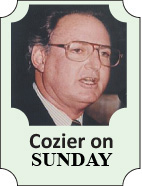The West Indies’ two Twenty20 Internationals against New Zealand over this weekend hold far more significance than simply the latest in the global escalation of the shortest, most popular and lucrative form of the game.
For selectors and coach, they present the last opportunity to consider form and combinations before the third ICC World Twenty20 in Sri Lanka September 18 to October 7.

It is particularly pressing on the Indian Premier League (IPL) megastars whose inclusion rendered the West Indies favourites for the ODIs and the one-off Twenty20 in England only for all to end in defeat.
For the administrators, there is another factor that transcends even the results. It is the location of the matches, in the south Florida city of Fort Lauderdale at the compact, impressive, purpose-built Central Broward Regional Park.
It is another concerted effort to transform cricket in the United States into a viable professional venture, beyond the weekend pastime it is for the multitude of naturalised Americans whose roots are in countries where it is an obsession.
Not even the most optimistic of the organizers – the enthusiastic local committee (that includes two legendary West Indies cricketers, Florida residents Lance Gibbs and Lawrence Rowe) and the boards of the competing teams – is so unrealistic as to expect a couple of matches, full-fledged, ICC sanctioned internationals in the new action-packed version though they might be, to so capture the imagination of the American public that a thriving national tournament will instantly emerge.
America’s sporting consciousness does not stretch much beyond its own creations of baseball, basketball, American football and ice hockey (even if pirated from Canada).
Genuine football, referred to as soccer to avoid confusion with its misnamed adaptation of rugby, may rule the roost globally; it still hasn’t fully established itself in spite of huge financial investment, the formation of a national professional league and the importation of some of the game’s most identifiable, if dated, names.
Earlier attempts at introducing a properly structured and administered cricket league to the American market have either been disorganized (as those concocted by questionable entrepreneurs), fanciful (as with Allen Stanford’s grandiose US$3.5 million scheme of televising and promoting his matches in the small Colorado city of Fort Collins as a test case) or ill-fated (as the two previous internationals at the Broward Regional Park between Sri Lanka and New Zealand two years ago that were turned into a farce by an unsatisfactory pitch that resulted in totals of 81 and 97 and just four sixes).
The infighting that has torn the United States of America Cricket Association (USACA) apart, caused its suspension from the International Cricket Council (ICC) in 2010 and led to the recent formation of a breakaway organization, Cricket America, has been another major hindrance to the development of the game. Yet the portents this time are encouraging.
South Florida is the adopted home of thousands of West Indians. The presence of a team they can identify with and players who have become the most electrifying in the 20-overs dash (Gayle the most eminent) guaranteed the sellout of the 16,000 capacity for both matches. There has also been an influx of fans from New York and from the Caribbean, mainly Trinidad.
Such truths are not lost on Gayle himself or his teammates.
“The first game of any tour, of any series, is always important and hopefully, come tomorrow, we can get that kick-start that would be so vital no matter where in the world you are playing,” the reinstated, present day Master Blaster said prior to yesterday’s match.
“We have a lot of supporters here and it is clear they are excited to see us come and play in America. It would be really nice to start with a win for them, for the people back home, and all our fans.”
The Guyana government, ostracized by the WICB after it replaced the Guyana Cricket Board (GCB) with its own Interim Management Committee (IMC), has raised strident objections to the preference of an American park over the traditional venues in the Caribbean. Yet a successful weekend would ensure more such matches for Broward and, eventually, for other areas with similar West Indian demographics, notably New York.
The careful preparation of the pitch, under the supervision of Samuel Plummer, once head curator at Jamaica’s Chedwin Park, should have ensured no repetition of the boundary-starved, low-scoring, series two years ago between Sri Lanka and New Zealand, neither with a significant Florida fan base.
New Zealand captain Ross Taylor has added his opinion to Australian all-rounder Shane Watson’s that the West Indies have the all-round depth and the experience to make them favourites for the World Twenty20.
Their 2-2 share of the ODI series against Australia at home in March, when all the IPL men except Gayle were available, also hinted at strengthening in that format.
England’s subsequent dominance came as a reality check, prompting Sammy’s repetition of the age-old cliché that the game is played on the field, not on paper. Consistency remains the West Indies most critical requirement. The teams, placed virtually level in the lower half of the ICC’s rankings, start with contrasting levels of preparation.
The West Indies have had six Tests, seven ODIs and three T20s over the past four months; Broward is their 15th venue (after Arnos Vale, Beausejours, Kensington, Queen’s Park, Windsor Park, Hove, Northampton, Lord’s, Trent Bridge, Leicester, Edgbaston, Southampton, the Kia Oval and Headingley); New Zeland’s last international was the third Test against South Africa in Wellington in late March.
With five ODIs and two Tests to follow in the next six weeks, it could be significant.
For the time being, the attention is more on the West Indies’ first match on American territory since E. F. Wright carried his representative team of amateurs to Canada and the U.S. 130 years ago.





